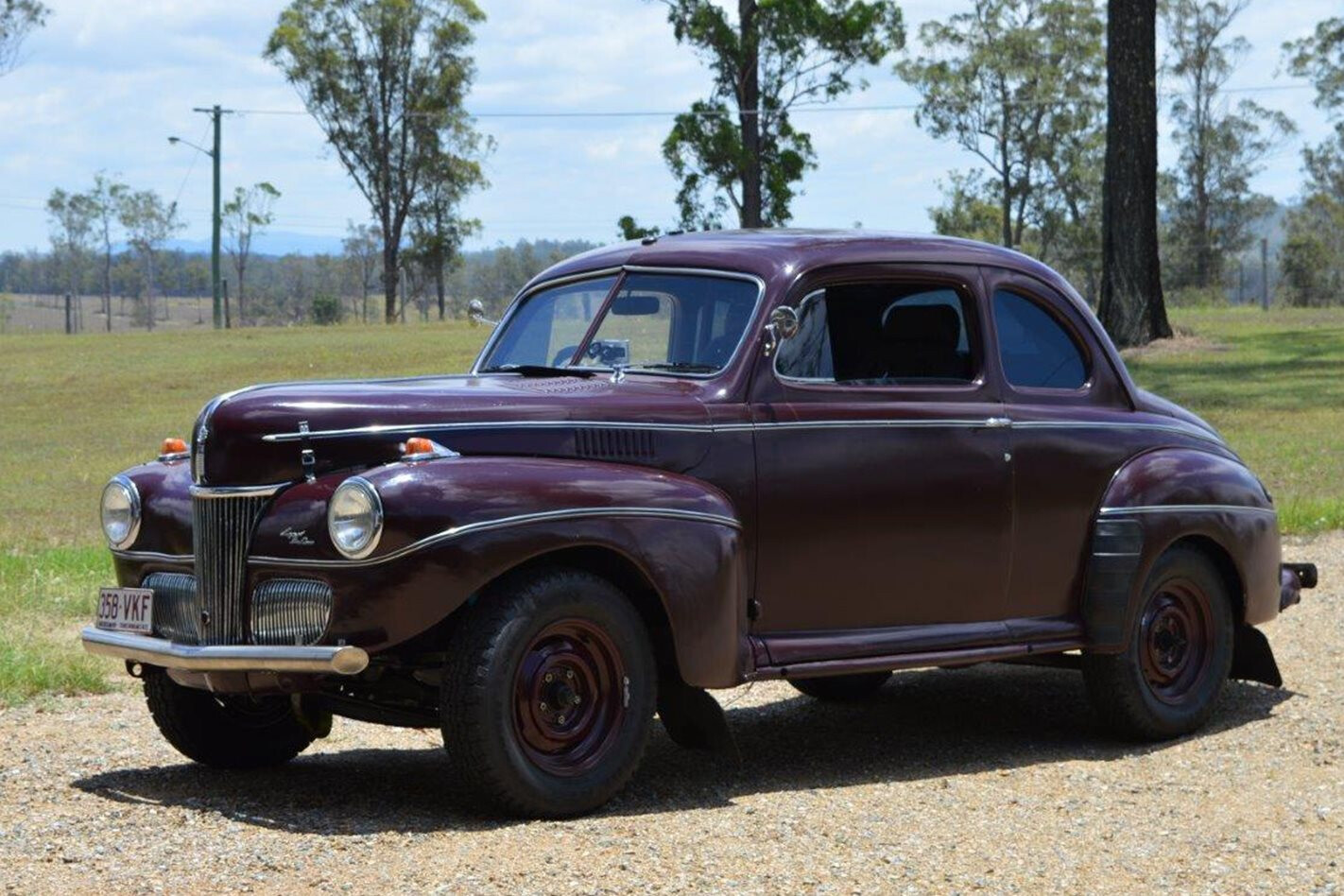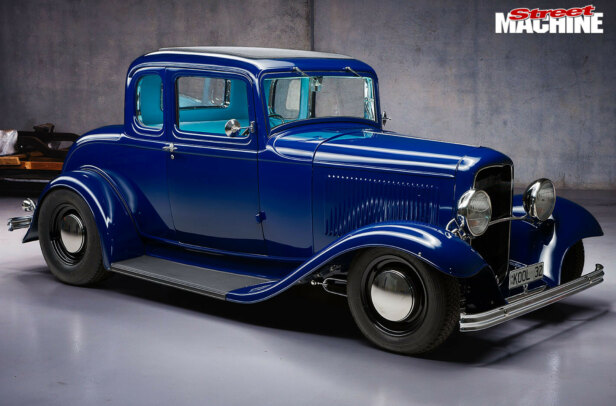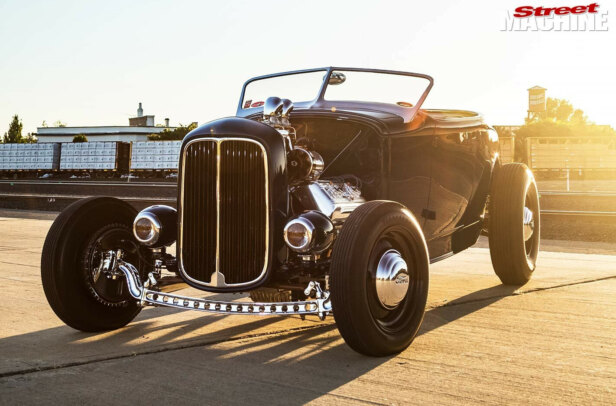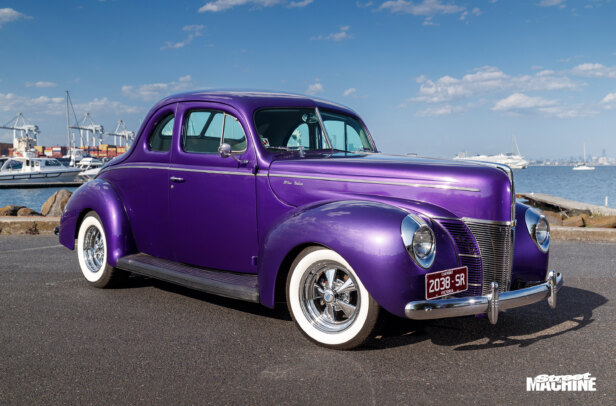At 71 years old, retired engineer Barry Shelton rebuilt a 1941 Ford Super Deluxe five-window coupe to tackle one of the world’s longest and toughest competition rallies for old cars – the Peking to Paris Motor Challenge. Here’s his story…
This article on Barry’s Ford Super Deluxe was originally published in the July 2016 issue of Street Machine
THEY sure are a rare breed, these guys. Some call themselves ‘old pricks on slicks’, because they stuff around with vintage competition cars, or re-create new ones out of parts they salvage from swap meets or outback dumps. This month’s Dirty Stuff is about one of those blokes, Barry Shelton, who, together with wife Marti, has entered a 1941 Ford Super Deluxe five-window coupe in one of the world’s longest and toughest competition rallies for old motoring iron.
It has taken the 71-year-old retired first class ship’s engineer from Brisbane just on 12 months (and a cubic bin of the folding stuff) to prepare this flathead Ford V8-powered car so that he and Marti could make it to Beijing for the fifth re-enactment of the 1907 Peking to Paris race in 2016.
Actually, the original 1907 event wasn’t supposed to be a race, but it quickly became a fiercely contested affair, and was won by an Italian prince and a journalist in a 454ci-engined Itala, scoring them the fantastic prize of one magnum of Mumm champagne.
The 2016 rally of 120 enthusiastic entrants fired up on 12 June from the old city of Peking (now Beijing) to somehow survive 13,695km through Northern China, Mongolia and the Gobi Desert, Russia, Belarus, Poland, Slovakia, Hungary, Slovenia, Italy, Switzerland and hopefully arrive in Paris sometime on 17 July. Restricted to veteran, vintage and classic cars, there ain’t no back-up support teams, and you carry all your spares and survival gear.
Fourteen Australian teams entered, driving things like a P76, a Mustang, a Ford Model A and even a couple of courageous girls in a Monaro. Barry and Marti are in the 1932-1941 Vintageant class, number 54 in a group piloting mainly American iron – Fangio-replica Chevs, Fords, Studebakers, Dodges.
Barry was going to enter a 1960s Falcon, but that class was already chockers, so he looked around for something from an earlier era. He found an old man in Brisbane who wanted to sell his Henry coupe, which he’d shipped in from Chile 35 years ago, and then Barry got stuck into a full-on rebuild.
As it had to be kept mostly original to go with the spirit of the event, the chosen flathead engine was a 24-stud unit, driving through a steel flywheel and 11-inch truck clutch to Ford’s fragile three-speed column-shift ’box and back through a torque tube to a 3.77:1 rear end. The mill got bored and fitted with new pistons, a half-race cam and Edelbrock alloy heads with fly-cut valve pockets, to reduce the compression ratio to 7.6:1 for poor-quality fuel burning. In from the US came the MSD ignition bits and an Offenhauser inlet manifold supporting twin Stromberg 97 carbs, while Barry had nightmares building the tube headers and dual exhausts. The alloy radiator was ordered from the US but came in from China, the original 4kg Ford fan was replaced with a 600g piece from a Porsche, and a big Davies Craig electric fan was fitted to keep Ford’s notorious boiling habits under control.
Even the engine oil is special. Based on Bazza’s years of experience with big ships, he first tried a 15W-40 synthetic diesel oil, but the engine “drank this like a dying alcoholic,” he reckons. That was changed to a mineral diesel oil, mainly for the high zinc content.
Possible glass breakage along the Gobi prompted Bazza to replace all the windows with polycarbonate pieces, and the interior was stripped to hold two fully reclining bucket seats, with an Odyssey battery under the navigator’s seat, and room behind for two spare wheels and camping gear for eight days. The reworked dash now fits a GPS and transponder, rally meter and a back-up Garmin. In went an easy-reach fuse panel with safety switches, two handbrake levers linked individually to the rear drum brakes for bog retrieval, and a new set of Bendix Lincoln Zephyr brake assemblies with the addition of a PBR VH40 power unit. Four-point harnesses and a full rollcage look after safety, with the chrome-moly side bars allowing for outside jacking. A huge 212-litre fuel tank with double electric pumps fills up most of the boot.
The front and rear transverse leaf springs got a lot of attention, and are controlled by Bilstein off-road shocks on reinforced mounts. The 16-inch steel wheels came from an F100 truck and wear 205 radials. Those will be negotiating some of the toughest terrain in the world, so Barry took steps to make adjusting tyre pressures easier: “I permanently mounted a 12V compressor in the car,” he says, “as I have a great aversion to manual labour and all his Spanish friends!”
There’s also a Barry-made alloy sump guard, spare spring leaves bolted to the chassis, bonnet louvres for added cooling, and 100W lights for spotting wild horses before they get you.
All-up weight with 100 litres of fuel is 1740kg, and now, after a full year of preparation, all that’s needed is to survive those 34 days, and the untamed wild of those Asian deserts!




Comments